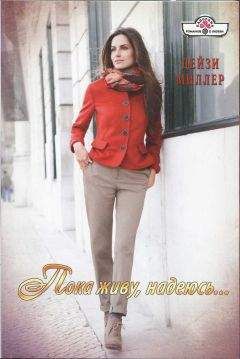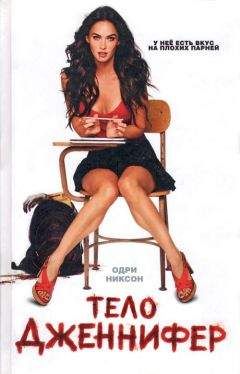Ричард Овери - Сталин и Гитлер
107. Bergmeier and Lotz, Hitler’s Airwaves, p. 139, 145; Lusane, Hitler’s Black Victims, pp. 202–3.
108. Stites, Russian Popular Culture, p. 82; M. W. Hopkins Mass Media in the Soviet Union (New York, 1970), p. 94; A. Inkeles Public Opinion in Soviet Russia: a Study in Mass Persuasion (Cambridge, Mass., 1950), pp. 226–7, 235–6, 255. In 1947 music supplied 60 per cent of programmes, political broadcasts 19.4 per cent, literary programmes 8.6 per cent, children’s programmes 7.9 per cent.
109. Bergmeier and Lotz, Hitler’s Airwaves, p. 6.
110. Bergmeier and Lotz, Hitler’s Airwaves, p. 7.
111. Bergmeier and Lotz, Hitler’s Airwaves, p. 8.
112. M. Turovskaya ‘The 1930s and 1940s: cinema in context’, in R. Taylor and D. Spring (eds) Stalinism and Soviet Cinema (London, 1993), p. 43.
113. Turovskaya, The 1930s and 1940s’, p. 42; Hollander, Soviet Political Indoctrination, pp. 214–15; Inkeles, Public Opinion, pp. 301–3.
114. Turovskaya, The 1930s and 1940s’, pp. 43, 45.
115. P. Kenez ‘Soviet cinema in the age of Stalin’, in Taylor and Spring Stalinism and Soviet Cinema, pp. 56–7, 61; Turovskaya,
The 1930s and 1940s’, p. 42; R. Taylor ‘Red stars, positive heroes and personality cults’, in Taylor and Spring, Stalinism and Soviet Cinema, p. 95.
116. Turovskaya, ‘The 1930s and 1940s’, p. 51.
117. Moritz, ‘Film Censorship’, p. 188; Taylor, Film Propaganda, pp. 145, 151; Welch, Propaganda and the German Cinema, p. 43.
118. Welch, Propaganda and the German Cinema, pp. 31, 35.
119. D. Welch ‘Nazi Film Policy: Control, Ideology, and Propaganda’, in Cuomo, National Socialist Cultural Policy, p. 113; Welch, Propaganda and the German Cinema, p. 14.
120. S. Hake Popular Cinema of the Third Reich (Austin, Tex., 2001), pp. 130–31; Moritz, ‘Film Censorship’, pp. 186–7.
121. S. Kracauer From Caligari to Hitler: a Psychological History of the German Film (Princeton, NJ, 1974), pp. 269–70.
122. E. Khokhlova ‘Forbidden fi lms of the 1930s’, in Taylor and Spring, Stalinism and Soviet Cinema, p. 94.
123. J. Haynes New Soviet Man: Gender and Masculinity in Stalinist Soviet Cinema (Manchester, 2003), p. 52; L. Attwood ‘The Stalin Era’, in Attwood (ed.) Red Women on the Silver Screen: Soviet Women and Cinema from the beginning to the end of the Communist era (London, 1993), pp. 57–8.
124. Attwood, ‘Stalin Era’, p. 65; M. Enzensberger ‘“We were born to turn a fairy tale into reality”: Grigori Alexandrov’s The Radiant Path’, in Taylor and Spring, Stalinism and Soviet Cinema, pp. 97–108.
125. Welch, ‘Nazi Film Policy’, p. 109.
126. Hake, Popular Cinema of the Third Reich, pp. 192–9.
127. Kracauer, Caligari to Hitler, pp. 255–6.
128. Stites, Russian Popular Culture, pp. 73–9; Hollander, Soviet Political Indoctrination, pp. 214–15.
129. Marsh, Images of Dictatorship, pp. 27–8.
130. F. J. Miller Folklore for Stalin: Russian Folklore and Pseudofolklore of the Stalin Era (New York, 1990), p. 7.
131. Miller, Folklore for Stalin, pp. 69, 71; R. Robin ‘Stalin and Popular Culture’, in H. Günther (ed.) The Culture of the Stalin Period (London, 1990), p. 29.
132. L. Mally ‘Autonomous Theatre and the Origins of Socialist Realism: the 1932 Olympiad of Autonomour Art’, Russian Review, 52 (1993), pp. 198–211; see too Lebedeva, ‘Soviet Culture of the 1930s’, pp. 68–76, 83–5.
133. J. Macleod The New Soviet Theatre (London, 1943), pp. 53–7, 65.
134. Taylor, Literature and Society, pp. 246–61.
135. W. Niven ‘The Birth of Nazi Drama’, in London (ed.), Theatre under the Nazis, pp. 54–5.
136. E. Levi ‘Opera in the Nazi Period’, in London (ed.), Theatre under the Nazis, pp. 62–73; see too R. Stommer ‘“Da oben versinkt einem der Alltag…”: Thingstätten im Dritten Reich als Demonstration der Volksgemeinschaftsideologie’, in D. Peukert and J. Reulecke (eds) Die Reihen fast Geschlossen: Beiträge zur Geschichte des Alltags unterm Nationalsozialismus (Wuppertal, 1981), pp. 154 ff.
137. B. Drewniak ‘The Foundations of Theater Policy in Nazi Germany’, in Cuomo, National Socialist Cultural Policy, pp. 68, 82–3; Stommer, ‘Thingstätten im Dritten Reich’, pp. 170–72.
138. Brecht, Poems, p. 299. On Benjamin see B. Taylor and W. van der Will ‘Aesthetics and National Socialism’, in Taylor and van der Will, Nazifi cation of Art, p. 11. On the role of aesthetics in politics see P. Reidel ‘Aspekte ästhetischer Politik im NS-Staat’? in Hermann and Nassen, Formative Ästhetik, pp. 14–21; P. Labanyi ‘Images of Fascism: Visualization and Aes-theticization in the Third Reich’, in M. Lafann (ed.) The Burden of German History: 1919–1945 (London, 1988), pp. 156–60, 170–72. See too S. Behrenbeck Der Kult um die toten Helden: nationalsozialistische Mythen, Riten und Symbole (Vierow bei Greifswald, 1996).
139. Labanyi, ‘Images of Fascism’, p. 169.
140. Spotts, Hitler and the Power of Aesthetics, pp. 100–101.
141. A. Speer Inside the Third Reich: Memoirs (London, 1970), pp. 58–9.
142. H. T. Burden The Nuremberg Party Rallies: 1923–39 (London, 1967), pp. 138–43.
143. Baird, To Die for Germany, pp. 58–6.
144. Baird, To Die for Germany, pp. 62–5.
145. S. I. Luck Observation in Russia (London, 1938), pp. 30–39.
146. Luck, Observation in Russia, p. 33.
147. R. Sartorti ‘Stalinism and Carnival: Organisation and Aesthetics of Political Holidays’, in Günther, Culture of the Stalin Period, pp. 49–50.
148. Sartorti, ‘Stalinism and Carnival’, pp. 58, 71.
149. Brecht, Poems, p. 299.
150. V. Garros, N. Korenevskaya and T. Lahusen (eds) Intimacy and Terror: Soviet Diaries of the 1930s (New York, 1995), pp. 181–2, diary of Galina Shtange, 25 December 1936.
151. Garros et aL, Intimacy and Terror, pp. 183, 191, Shtange diary, 25 December, 1936, 8 May 1937.
152. M. Agursky ‘An Occult Source of Socialist Realism: Gorky and Theories of Thought Transference’, in B. G. Rosenthal (ed.) The
Occult in Russian and Soviet Culture (Ithaca, NY, 1997), p. 250.
153. Agursky, ‘Occult Source of Socialist Realism’, pp. 249, 252–8.
154. Meyer, ‘Musical Façade’, p. 182.
155. Golomstock, Totalitarian Art, p. 179.
Глава 10
1. F. Thyssen I Paid Hitler (London, 1941), p. 187.
2. H. A. Wessel Thyssen & Co> Mülheim a.d.Ruhr: die Geschichte einer Familie und ihrer Unternehmnung (Stuttgart, 1991), pp. 47–8, 162–3, 171.
3. Wessel, Thyssen & Co, pp. 48. 171; Thyssen, I Paid Hitler, pp. 30–41, 49–50; A. Barkai Nazi Economics: Ideology} Theory, and Policy (Oxford, 1990), pp. 120–21.
4. V. Kravchenko, 1 Chose Freedom: the Personal and Political Life of a Soviet Offi cial (London, 1947), pp. 174–5.
5. Kravchenko, I Chose Freedom, pp. 203–4.
6. Kravchenko, I Chose Freedom, pp. 2–4, 216–22, 226–30, 347–51.
7. K. McKenzie Comintern and World Revolution (New York, 1964), p. 144.
8. F. Pollock ‘Staatskapitalismus’, in H. Dubied and A. Sollner (eds) Wirtschaft, Recht und Staat im Nationalsozialismus: Analysen des Instituts für Sozialforschung (Frankfurt am Main, 1981), pp. 81–106; ‘dysfunctional capitalism’ in A. Sohn-Rethel Economy and Class Structure of German Fascism (London, 1978), pp. 128–31.
9. Bundesarchiv-Berlin, R7/2149 Ohlendorf papers ‘Grundsätze der Volkswirtschafts-politik’ [September 1935], p. 9.
10. See for example P. R. Gregory (ed.) Behind the Façade of Stalin’s Command Economy (Stanford, 2001).
11. In general see T. Balderston Economics and Politics in the Weimar Republic (Cambridge, 2002); H. James The German Slump: Politics and Economics, 1924–1936 (Oxford, 1986); H.-J. Braun The German Economy in the Twentieth Century (London, 1990); R. J. Overy ‘The German Economy, 1919–1945’, in P. Panayi (ed.) Weimar and Nazi Germany: Continuities and Discontinuities (London, 2001), pp. 33–73.
12. See in general R. W. Davies (ed.) From Tsarism to the New Economic Policy (Ithaca, NY, 1991); R. Munting The Economic Development of the USSR (London, 1982); P. Gatrell The Tsarist Economy, 1850–1917 (London, 1986).
13. A. M. Ball Russia’s Last Capitalists: the Nepmen, 1921–1929 (Berkeley, Calif., 1987), pp. 162–5; on small-scale trade A. Baykov The Development of the Soviet Economic System (Cambridge, 1947), p. 107. Out of 165,781 enterprises in the production census in 1923, 147,471 (88.5 per cent) were in private hands. In 1922–3, some 75 per cent of the retail trade was also in private hands (p. 55).
14. Munting, Economic Development, p. 97.
15. R. W. Davies, M. Harrison and S. G. Wheatcroft (eds) The Economic Transformation of the Soviet Union (Cambridge, 1994), pp. 36–7, 292. There is no agreed fi gure on the annual rate of industrial growth. The Soviet offi cial fi gure was 16.8 per cent a year.
16. Davies, Harrison and Wheatcroft, Economic Transformation, p. 296; Statistisches Jahrbuch für das Deutsche Reich, 1933 (Berlin, 1934).
17. On Russia see Davies, Harrison and Wheatcroft, Economic Transformation, p. 269. Soviet GNP was 123.7 bn rbls. in 1928, 212.3 bn in 1937 (1937 prices); German GNP from A. Ritschl and M. Spoerer ‘Die Bruttosozialprodukt in Deutschland nach den amtlichen Volkseinkommens-und Sozialproduktstatistiken 1901–1995’, Jahrbuch für Wirtschaftsgeschichte,
37 (1997), pp. 51–2. Growth between 1928 and 1938 was 39 per cent in real terms, from 90.8 bn RM in 192.8 to 12.6.2 bn in 1938.
18. J. Stalin Works (13 vols, Moscow, 1952–55), vol. xii, p. 252, political report of the CC to the XVI Congress of the CPSU, 27 June 1930.
19. R. Zitelmann Hitler: the Politics of Seduction (London, 1999), p. 224; H. Rauschning Hitler Speaks (London, 1939), p. 235.
20. Zitelmann, Hitler, p. 215; Stalin, Works, vol. xi, p. 314; Rauschning, Hitler Speaks, p. 34.
21. J. Stalin Problems of Leninism (Moscow, 1947), p. 300, ‘A Year of Great Change’ Pravda, 7 November 1929.
22. Stalin, Works, vol. xii, pp. 314–20, political report to the XVI Congress; J. Stalin Economic Problems of Socialism in the U.S.S.R. (Peking, 1972), p. 5.
23. Stalin, Works, vol. xii, pp. 311–15.
24. Zitelmann, Hitler, pp. 206, 207.
25. Barkai, Nazi Economics, p. 37.
26. NSDAP Parteitag der Arbeit von 6 bis 13 September 1937 (Munich, 1938), p. 38.
27. O. Wagener Das Wirtschaftsplan der NSDAP (Munich, 1932), p. 5.
28. A. Hitler The Secret Book ed. T. Taylor (New York, 1961), pp. 5–6, 13.
29. Hitler, Secret Book, pp. 14, 24.
30. Hitler, Secret Book, pp. 21–3.
31. K.-H. Minuth (ed.) Akten der Reichskanzlei: Regierung Hitler 1933–1938 (Boppard am Rhein, 1983), vol. i, p. 62, committee for work-creation, 9 February 1933.
32. F. Nonnenbruch Die Wirtschaft in derNS Politik (Berlin, 1935), p. 16.
33. Zitelmann, Hitler, p. 226–7, 232; on planning BA-B, R7/2149, Ohlendorf memorandum, ‘Grundsätze der Volkswirtschaftspolitik’,




